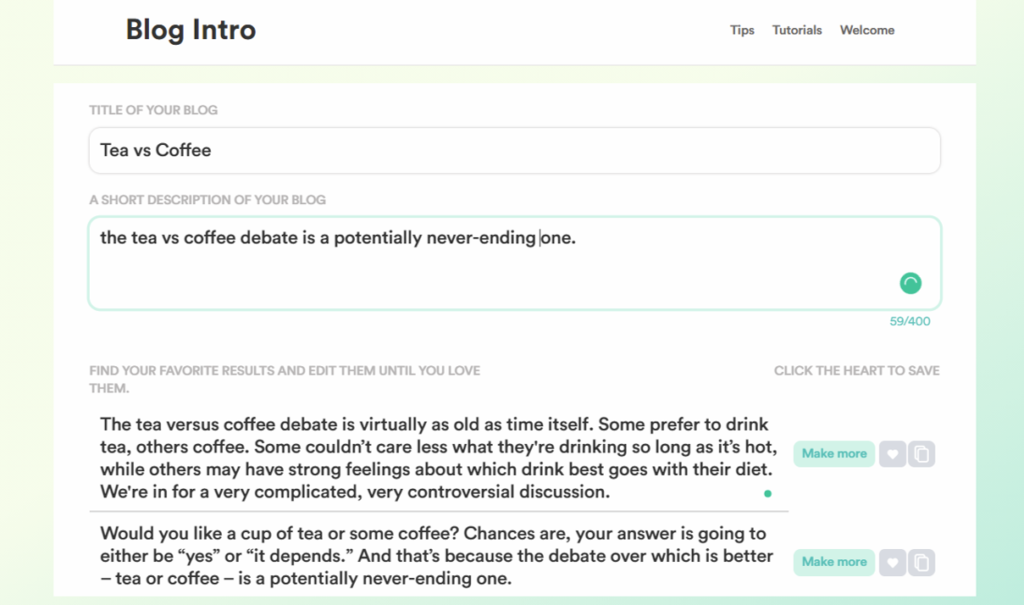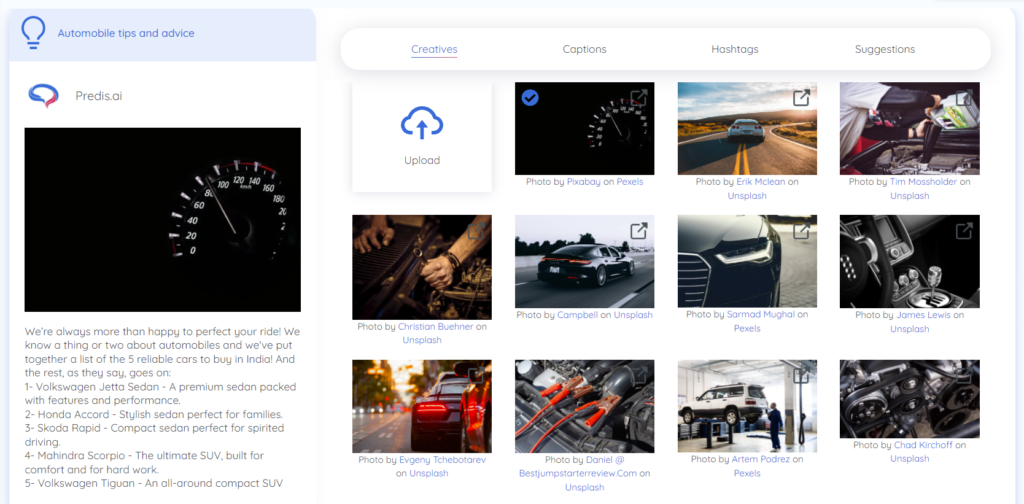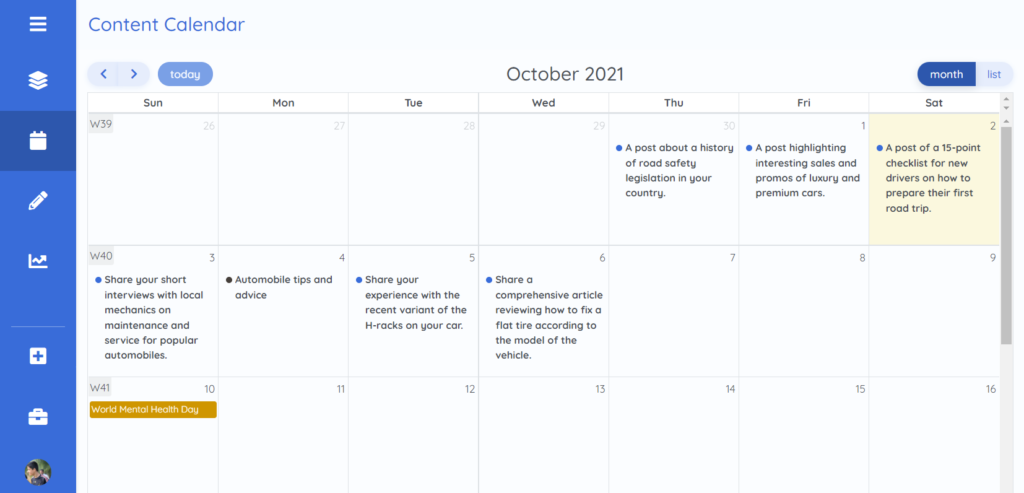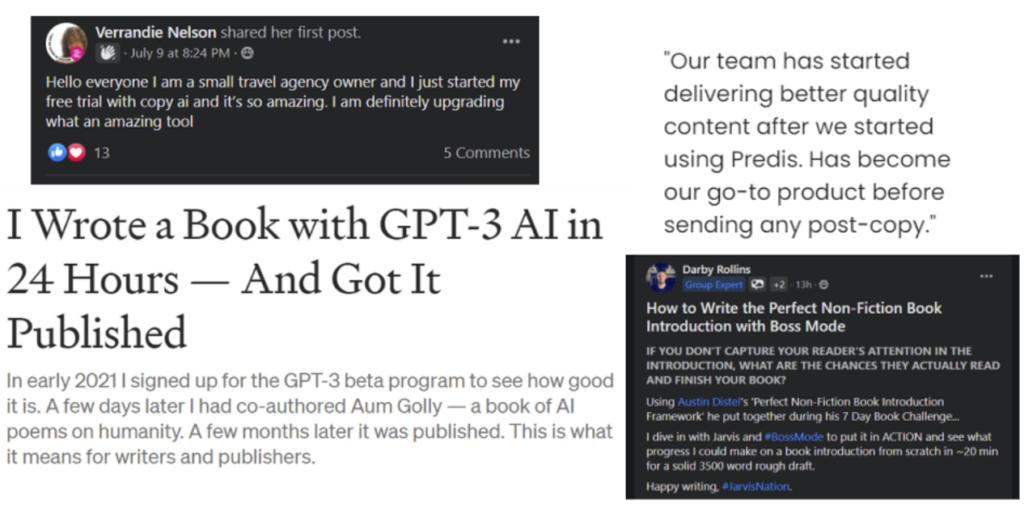The world is still pretty split on the concept of artificial intelligence. While some are welcoming it into their lives with wide-open arms, others claim that the use of AI without caution could lead to unforeseen outcomes beyond our imagination.
However, there are some applications of AI that aren’t nearly as dramatic as pop culture makes AI out to be. One of these is the very popular GPT-3. If you’re a solopreneur, a social media manager or an agency, you should sit up and take note, of what could possibly change the copywriting space forever!
What is GPT-3?
Heard of GPT-3 yet? I wouldn’t be surprised if you hear this mysterious acronym a lot lately. The hype for it has been building up for a year or so. However, it helps to know hard facts about something before jumping on its hype train. Without getting too technical, here’s what GPT-3 is all about.
GPT stands for Generative Pre-trained Transformer (if this sounds like something that can take over humanity, I promise you it isn’t), and GPT-3 is its third version, released in May 2020.
The tool was created by OpenAI, a leading research and development company co-founded by the great Elon Musk himself. Simply put, their raison d’être is to make the benefits of AI accessible to ‘all of humanity.’
Essentially, GPT-3, being a transformer model, uses a small amount of input text to generate much larger volumes of text (when required) that read naturally and intelligently. It’s been generating buzz for a year or so, mainly because the text it generates reads exactly as a human would have written it while taking only a fraction of the time.
This is partly because it uses as many as 175 billion machine learning parameters to generate the appropriate output. As a layman, you may not know what to make of this number, but to give you an idea, the closest model that was trained to this extent was developed by Microsoft, and it used 10 billion parameters. Also, the final model is trained using thousands of web pages, journals, books and basically all of Wikipedia.
Basically, it’s a big deal.
It also has a LOT of use cases. In this article, I focus on how it powers AI copywriter tools, as this is its main purpose.
AI copywriter tools based on GPT-3 that you can use
Copy.ai and Conversion.ai
Perhaps the most mainstream software that uses GPT-3, these apps are shockingly good, even though you wouldn’t expect them to be more than mere gimmicks once you read their proposition.
Both products (that have zero affiliation with each other, by the way) can automatically generate various kinds of content. The ‘various kinds’ bit is obviously an understatement because they have a large number of features in their rosters.
Social media posts/ads, website content, blogs, emails, sales copy, shower thoughts (?!), you name it. Shockingly, people have written entire books on GPT-3-based book generators (with only minor edits), and they are perfectly readable.
Again, this sounds very gimmicky until you actually start to use the products and see how useable the generated content is. The most widely used feature of these apps is in blogging. Here’s an example.

As is seen in the screenshot above, Copy.ai has generated perfectly useable (and reader-friendly) blog intros even with minimal input. Conversion.ai works in a similar fashion. There are several ways this software help you speed up your blog-writing process. You can create blog ideas, intros, outlines, or even convert sentences into paragraphs and bullet points into blogs.
Another way people use these apps is to create social media ads. Here’s an example of Facebook listicle created for a fictional product.

What surprises me every time I use GPT-3 based software is how snappily it works, especially when you consider all the technicalities in the background. While the tool itself is fairly complex (complex being an understatement), all you need to be concerned about is what you add as input. The tool does the rest! And as you can see, the speed barely compromises the quality of the output produced; if not used as is, it still helps ignite the spark for bigger ideas.
Predis.ai
Predis.ai is a GPT-3 tool that does things differently, in that it’s more focused on optimising your social media content. It has a distinct ‘Create Post’ feature which takes input from you based on what you want a particular post to be about. Here’s an example.

For this example, I’m adding ‘automobile tips and advice’ for Predis to create a post around. Here is what Predis returned.

As you can see, Predis has suggested multiple creatives and a caption that is related to the post idea I input. There are also specific tabs for editing creatives, captions and hashtags. This is the Creative tab, and you can choose from a bunch of free-to-use creatives from Unsplash and Pexels.
On the Captions tab, you can easily edit the generated caption, or request to generate more. On the Hashtags tab, you can add recommended hashtags straight to your caption. The hashtags can be sorted by relevance and popularity.
Apart from this, it also has a content calendar feature, wherein depending on your industry and business, Predis.ai suggests a full-fledged content schedule with ideas and captions, using GPT-3 of course. I generated this sample calendar for ideas for car advice and automobile reviews. Clicking on any idea will also reveal the caption, hashtag and creative suggestions.

You can easily edit/regenerate captions or choose from a variety of creatives with the social media content calendar.
These apps should give you an idea about the crazy-useful implementations of GPT-3. As you can expect, the AI copywriter tools have been met with rave reviews.

A quick search online and you’ll find positive rants on how GPT-3 changed their lives (we’re a really dramatic generation, aren’t we?). Acclaim has been coming from content creators, social media agencies, start-up managers, and even authors. These are generally first adopters that like to experiment with new technologies. Traditionalists mostly still prefer non-assisted copywriting.
But by now, you’d surely be wondering about a potential catch in this ground-breaking tool. I should tell you, while there isn’t one overarching catch, there are a few glaring limitations you should know about. Keep in mind that GPT is still evolving, and is still possible in the nascent stage of its very promising life.
Where GPT-3 falls a little short
Generated text can be potentially incorrect, or contain false information.
As you now know, the basic functioning of GPT-3 has to do with scanning the web and other sources, to look for patterns and references based on the little input you have given. While it’s incredibly efficient at doing this (imagine scanning terabytes worth of sources in microseconds), one must know that the tool does not exactly comprehend how each word or phrases contributes to the larger context. Thus, while the sentence generated might be grammatically sound, it may contain information that is outdated, factually incorrect or even offensive.
For this reason, many GPT-3 tools let you actively edit output according to research you have conducted in another space. This is also another reason why developers don’t recommend using GPT-3 tools by themselves and without supervision. If you are using one of these, always proofread! While that will take some of your time, your overall time to create a piece of content might reduce.
Long-form content generated by AI copywriter tools is hit and miss
While you technically can create long-form content using inexpensive apps like the ones mentioned above, it is near impossible to use the piece of text as is, without performing major edits. Perhaps more critically, the text generated may be completely incoherent. As each sentence may be based on the previous one, the article/blog can take on a completely different direction than the one you would have anticipated. In some cases, GPT-3 will also elaborate on the same idea repetitively, if you try to generate an overly wordy piece of text with very limited input.
This isn’t an issue when generating captions, ad content, or even short paragraphs.
If you do want to create long-form content with a GPT-3 tool, it will certainly help to go paragraph-by-paragraph. Individually input the main point of each paragraph and the tool will produce content that is more useable aligned with your expectations.
The tool needs constant updating to stay relevant
Aforementioned, the third version of the GPT model was trained using books, journals and thousands of web pages. However, this was developed in early 2020 and hasn’t been updated since then. If you use GPT-3 tools today, they will be unable to generate your output based on the latest sources. Thus, if you’ve used the tool in the past, you would know that any factual content created is outdated.
In my opinion, this is one of the most major downsides to GPT-3. This simple disadvantage restricts its usage to whole sets of demographics. For instance, news article writers would not find AI copywriter tools very handy, since these tools would not be able to accurately interpret the news being discussed. For blogs or articles that have to do with any recent information, GPT-3 tools will mostly be used to come up with great sentences or one-liners.
While it is still immensely helpful in any ideation or blog-writing process, it will be an added perk if GPT-3 was updated regularly to include recent events and facts in its training. This potentially adds a whole new level of useability to the tools that can be built on it.
Constant use may affect your creativity in the long run
Okay, this one’s a little abstract, but that doesn’t make it any less true.
Not too long ago, marketing departments of ALL organisations were standing only on the shoulders of raw, human creativity. Campaigns were ideated only after heated, passionate brainstorming sessions in conference rooms (remember physical office spaces before March 2020?). With further updates, GPT-3 may eliminate the need for this altogether.
Of course, this is still way in the future, but even now, copywriters and content creators may gradually find themselves unable to ideate without GPT-3 apps. Does that make these professions redundant? Only time will tell.
Final thoughts on AI copywriter tools
It wouldn’t take much playing-around with virtually any GPT-3-based tool to tell you that it’s nothing short of amazing. If you have a preconceived notion of an AI copywriter being much like a sentence spinner bot, rethink this, because it is miles ahead. It’s also perfectly ethical, something you absolutely cannot say about spin bots.
GPT-3’s implications are also relevant in several different industries. It feels like a bit of a sneak-peek into the future, and that’s no exaggeration.
Is it perfect? Not yet. Can you replace your current copywriters with software? Probably not. GPT-3 works best when you think of it as a tool to improve your productivity when it comes to content ideation and writing. It will also effectively steer you out of writer’s block!
But it’s still a work-in-progress, and mainstream adoption will only lead to faster progress with the promising concept.
What are your thoughts on the concept of the AI copywriter? Are you in favour of it? Do you loathe it? We’d love to know! Follow us on our socials, and let us know what you think!















